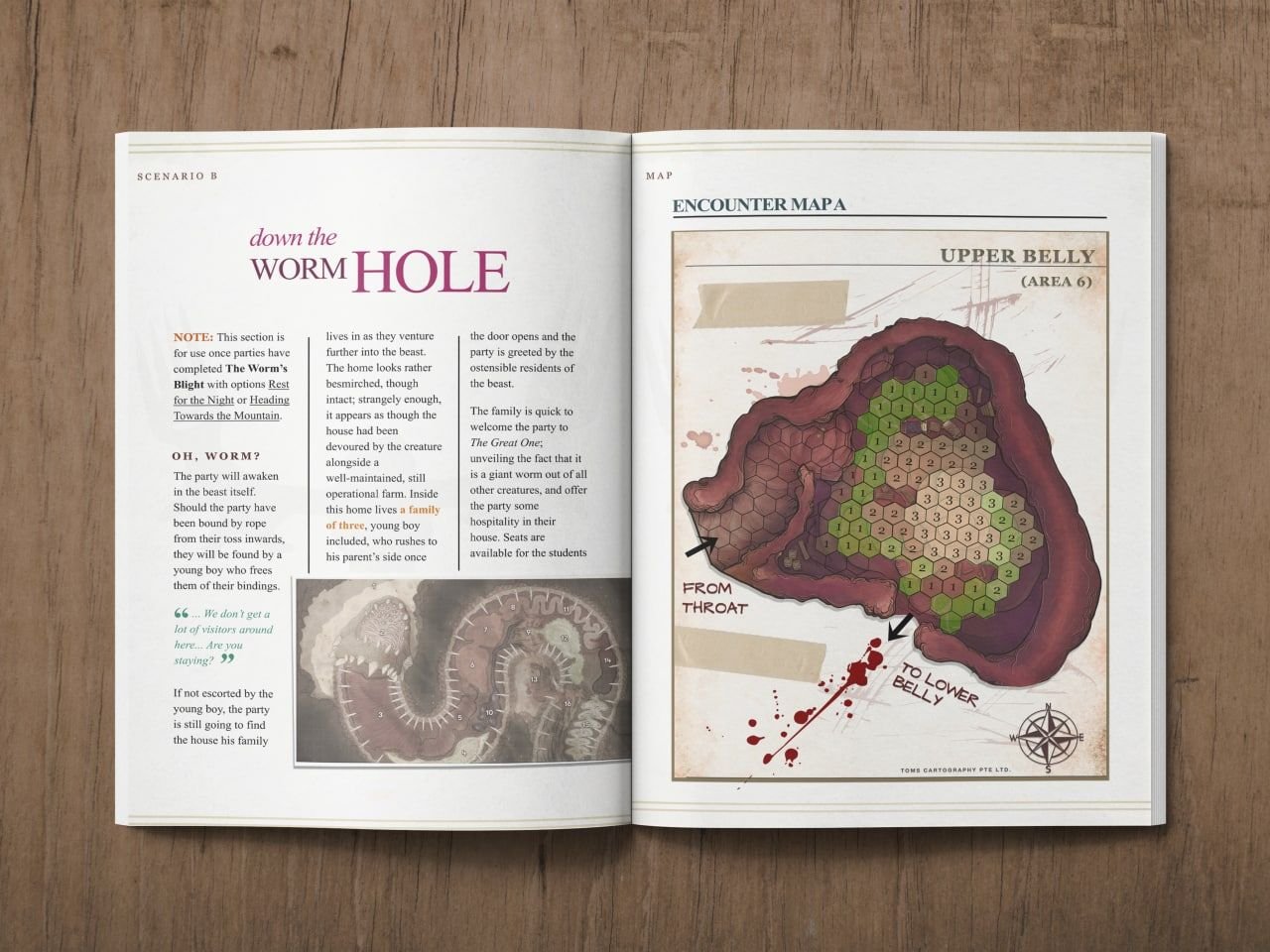Food Fight!
-
A school project where the theme for a TTRPG project was “Academia”.
-
2 Months
-
I worked as the lead Systems Designer and Scenario Planner for this project!
As the lead Systems Designer, my responsibilties consisted of creating and balancing:
Units
Attributes and Masteries
Unit/Character Creation
Combat System
Combat Resolutions
Weapon Designs
Spell Designs
A unique ever-changing armour system
Spatial Resolutions
Campaign Design
Scenario Design
Encounter Design
Click in to view the full PDF! (redirected to google drive)
About
Setting
Food Fight takes place in a post-apocalyptic setting, after a radioactive spice storm has torn across the world, birthing flavoured creatures that terrorise the populous at large.
Assume the role of an aspiring culinary student enrolled in the Rameses Academy of Culinary Arts. Master a plethora of Cooking Skills in order to dispatch monstrosities that roam the land, and go on memorable adventures with your party!









Design Process
Attributes and Masteries
When ideating for the game, I wanted to create a believable world where student chefs had various skills and masteries.
These attributes and masteries determine how well each student is able to perform various actions in the combat simulation portion of the game.
Having a variety of stats allows for various playstyles. No one chef can be a master of all! Hence, players will benefit from having a balanced team of chefs and working together.
Modularity
All entitles that exist in the combat simulation are constrained by the same stats - the various attributes and masteries.
This meant that Recipes and Weapons used in task resolutions can be shared by both players and enemy units.
All task resolutions are constant between player characters and enemies, creating a combat simulation with believable metrics.
This allowed for interesting combat dynamics to occur by pitting players against enemies of various combination of stats.
Flavour Affinity - A Unique Armour System
Thematic resonance is important to me in a TTRPG, hence I wanted to inject and simulate as many elements present in the art of cooking into the game.
By simulating balancing of flavours when cooking, the Flavour Affinity armour system was born.
The Flavour Affinity replaces a traditional armour rating system. Recipes and sometimes weapons will change a Unit’s Flavour Affinity.
A Cause and Effect Relationship
By creating an ever-shifting armour rating system, players are encouraged to pay careful attention to their Flavour Affinity, so as to maintain their defences against enemy physical attacks.
This also encourages players to work together; attempting to balance enemy flavour affinities to achieve an easier hit-rate when executing physical attacks.
Players must carefully consider what weapons or Recipes to use before shifting their player characters, ally characters or enemy Flavour Affinity.
Scenario Planning
BAlancing
Spreadsheet Galore!
Balancing statistics and chances for things to occur was a newfound challenge for me. By using Spreadsheets, I managed to visualise these statistics and percentages and tweak these values to a desired value for further playtesting.
The above spreadsheet was used to calculate how much a weapon’s attack modifier may influence the chances of dealing a successful physical attack.
Danger ceiling testing
The spreadsheet on the left allowed me to verify if any permutations of stat allocation may exceed a certain threshold.
Because a unit’s effective range is directly tied to their Weapon Mastery and Strength values, some units may have a game-breaking range.
With the blue cell on the right, the user can define the danger threshold. All values above that value would be highlighted in the table.
This spreadsheet also allowed for other designers on the team to efficiently verify if the stat allocation is reasonable for when design enemy units.
Reflections
Overall, really happy with how this project turned out, considering we only had 2 months to work on it.
Had a lot of fun running playtesting sessions as well as planning out a narrative for the scenario. It was nice change of pace to write the content and dialogue of the scenario as well!
In retrospect, the user experience and flow of the game could use more work, making it a smoother experience combat simulation. Perhaps a sort of “swarm” type movement for multiple weaker units so there’s lesser administrative work for the game master.








